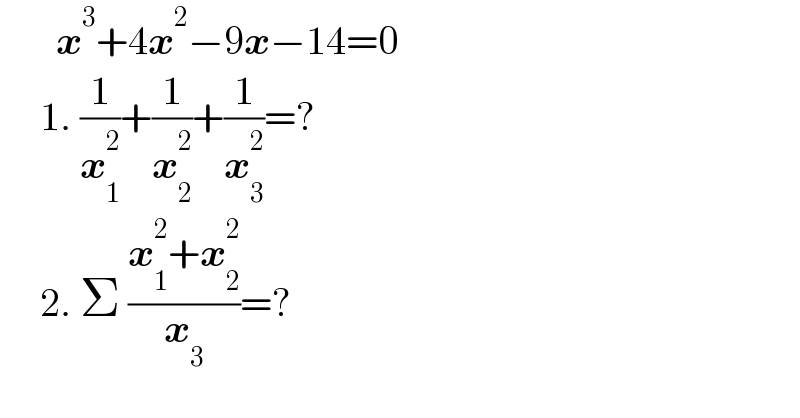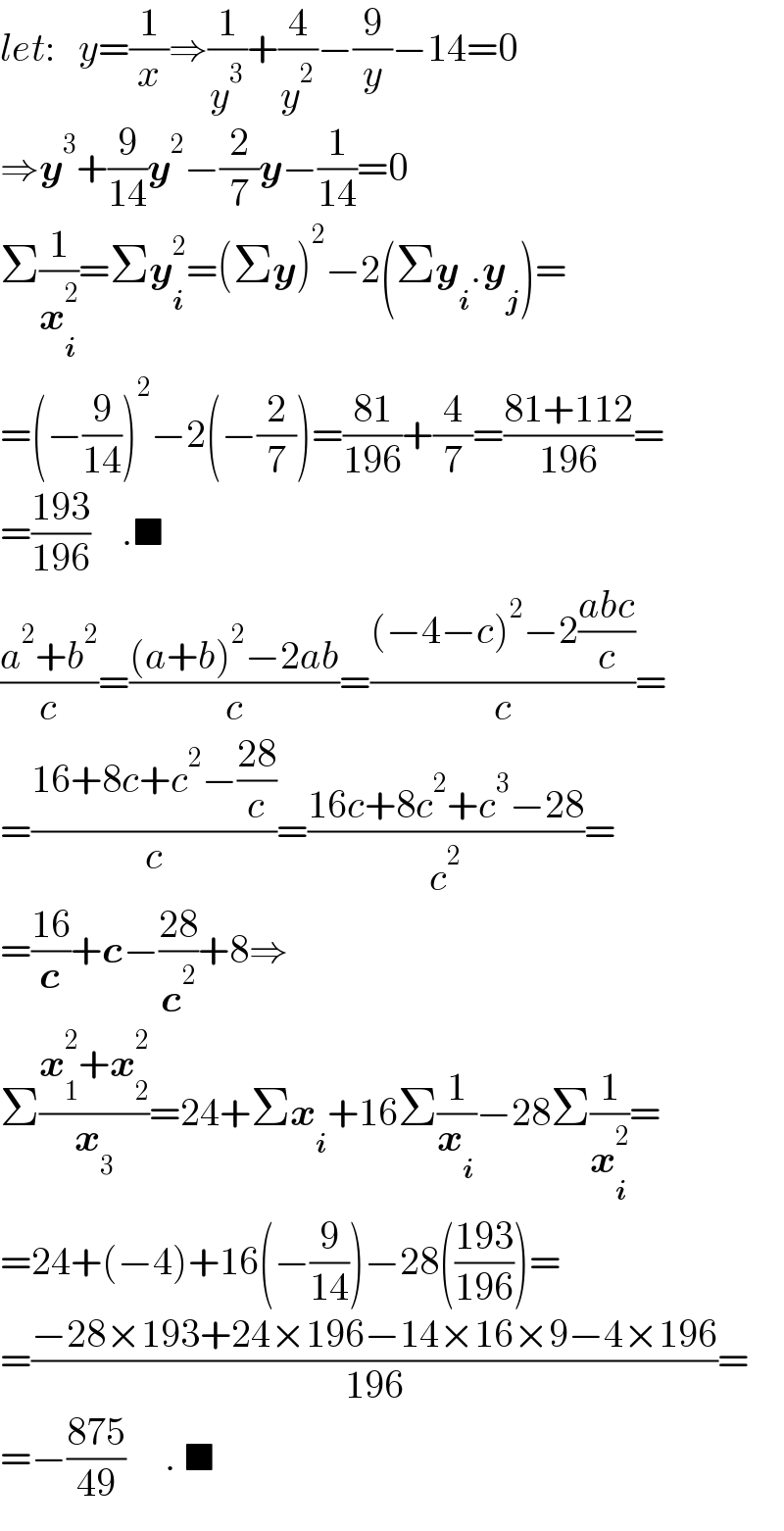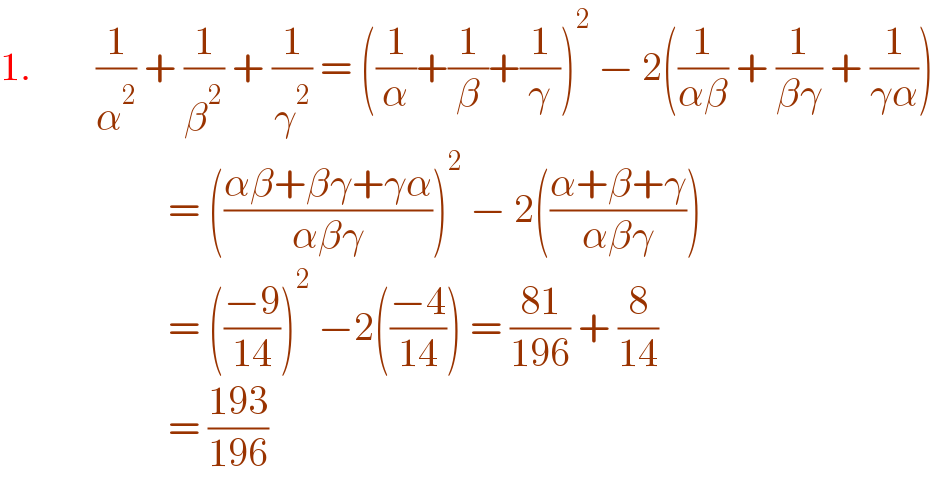
Question and Answers Forum
Question Number 174356 by behi834171 last updated on 30/Jul/22

Answered by behi834171 last updated on 30/Jul/22

Commented by Tawa11 last updated on 31/Jul/22

Answered by BaliramKumar last updated on 30/Jul/22

Commented by behi834171 last updated on 30/Jul/22

Commented by Tawa11 last updated on 31/Jul/22

